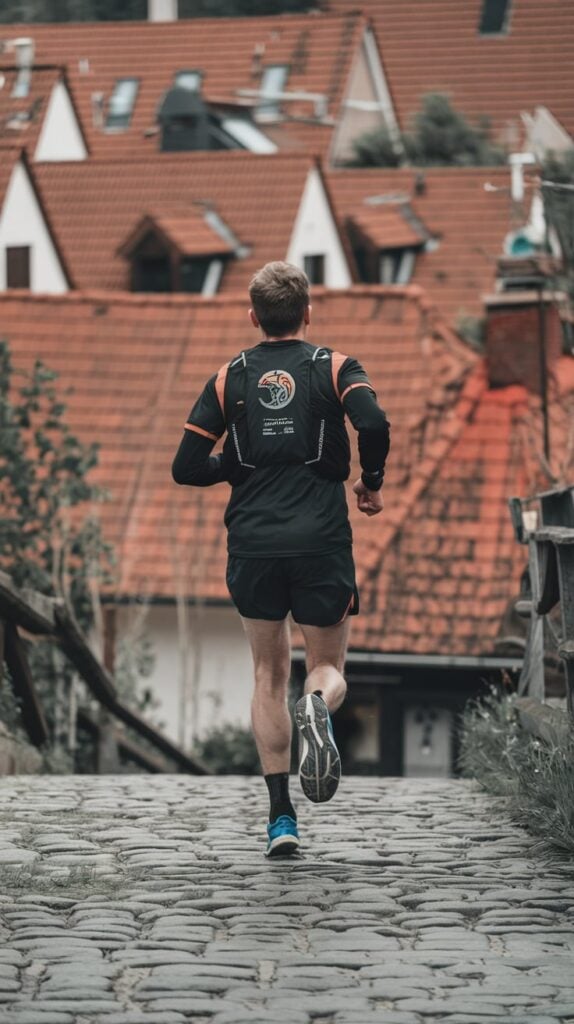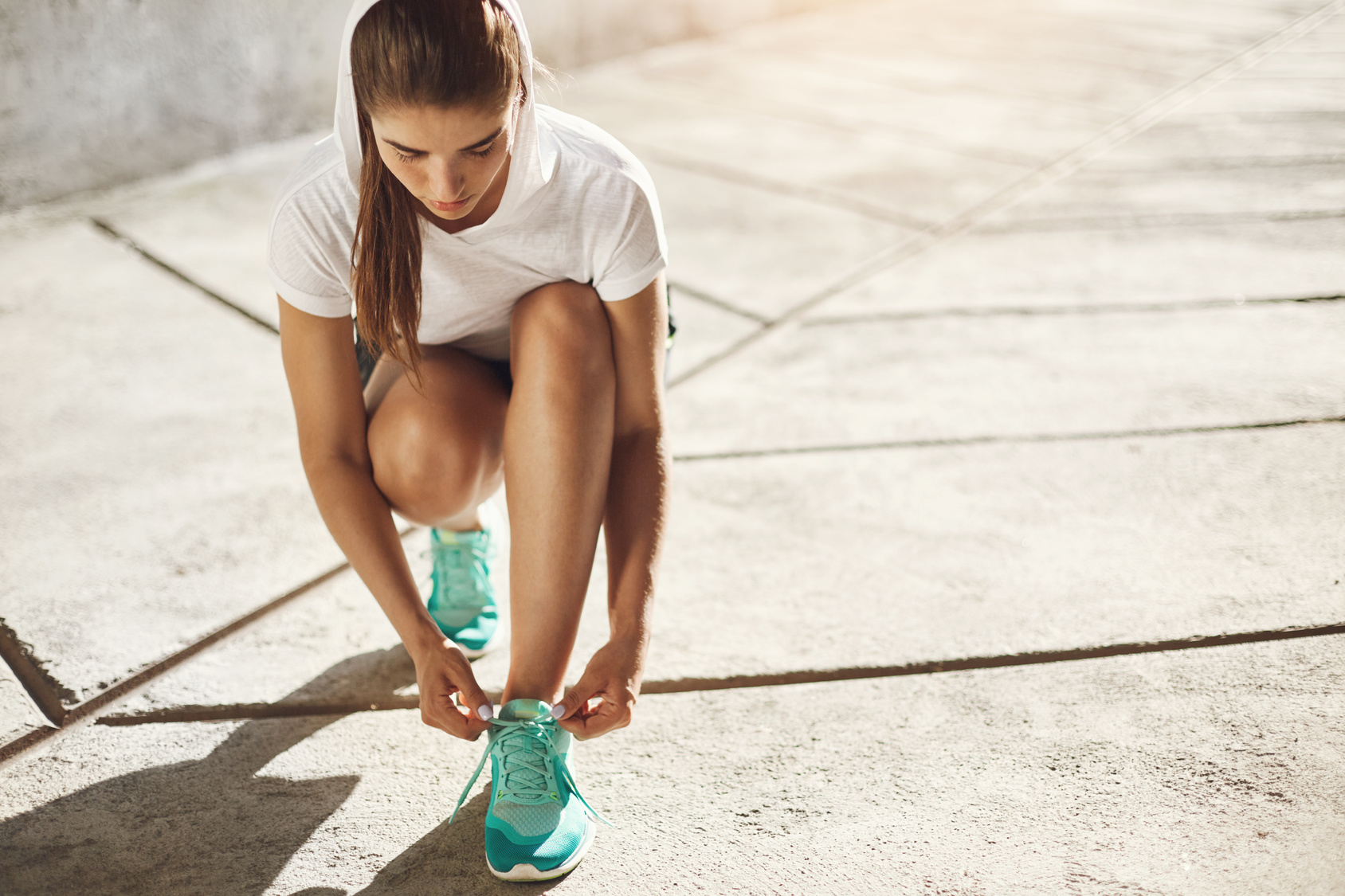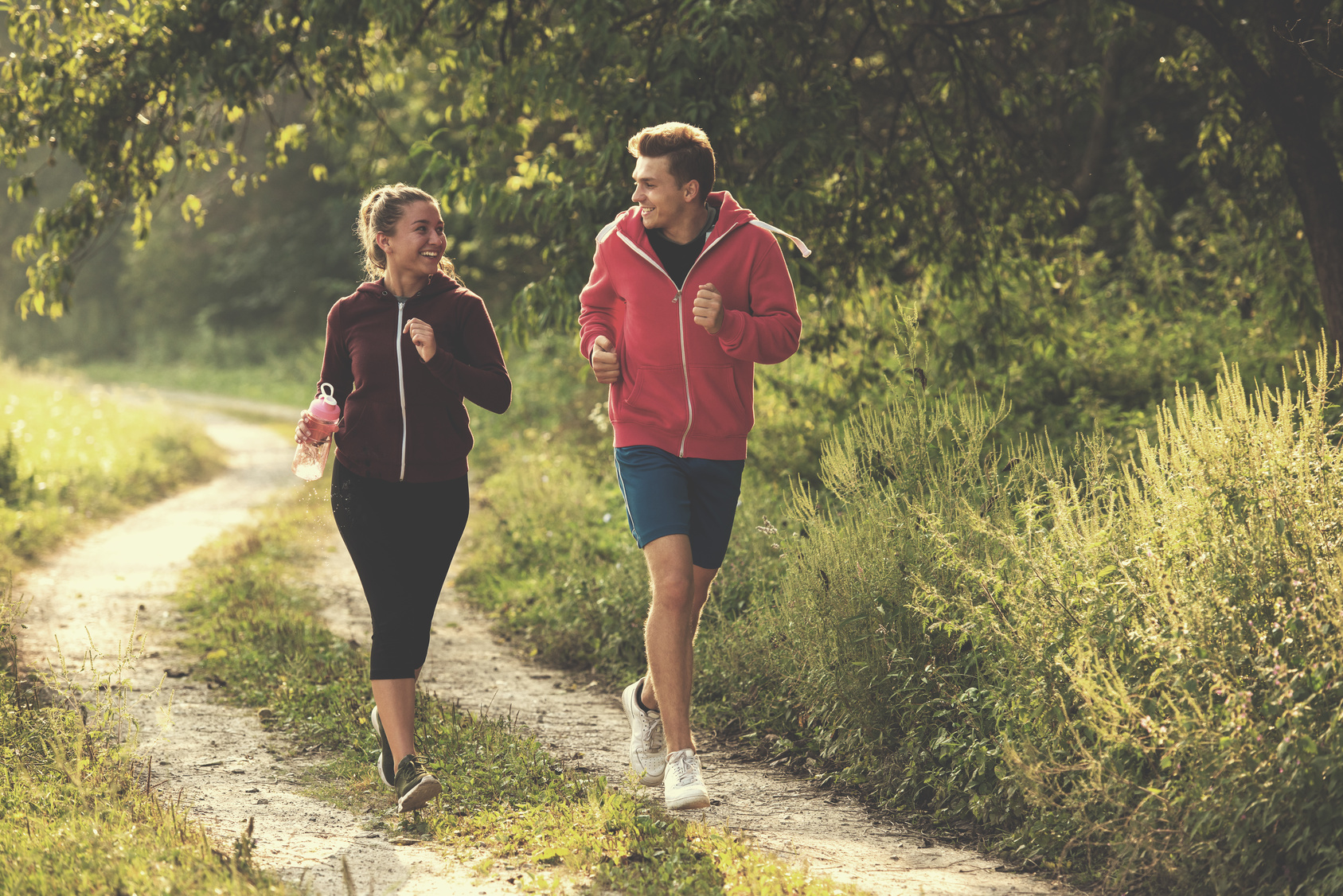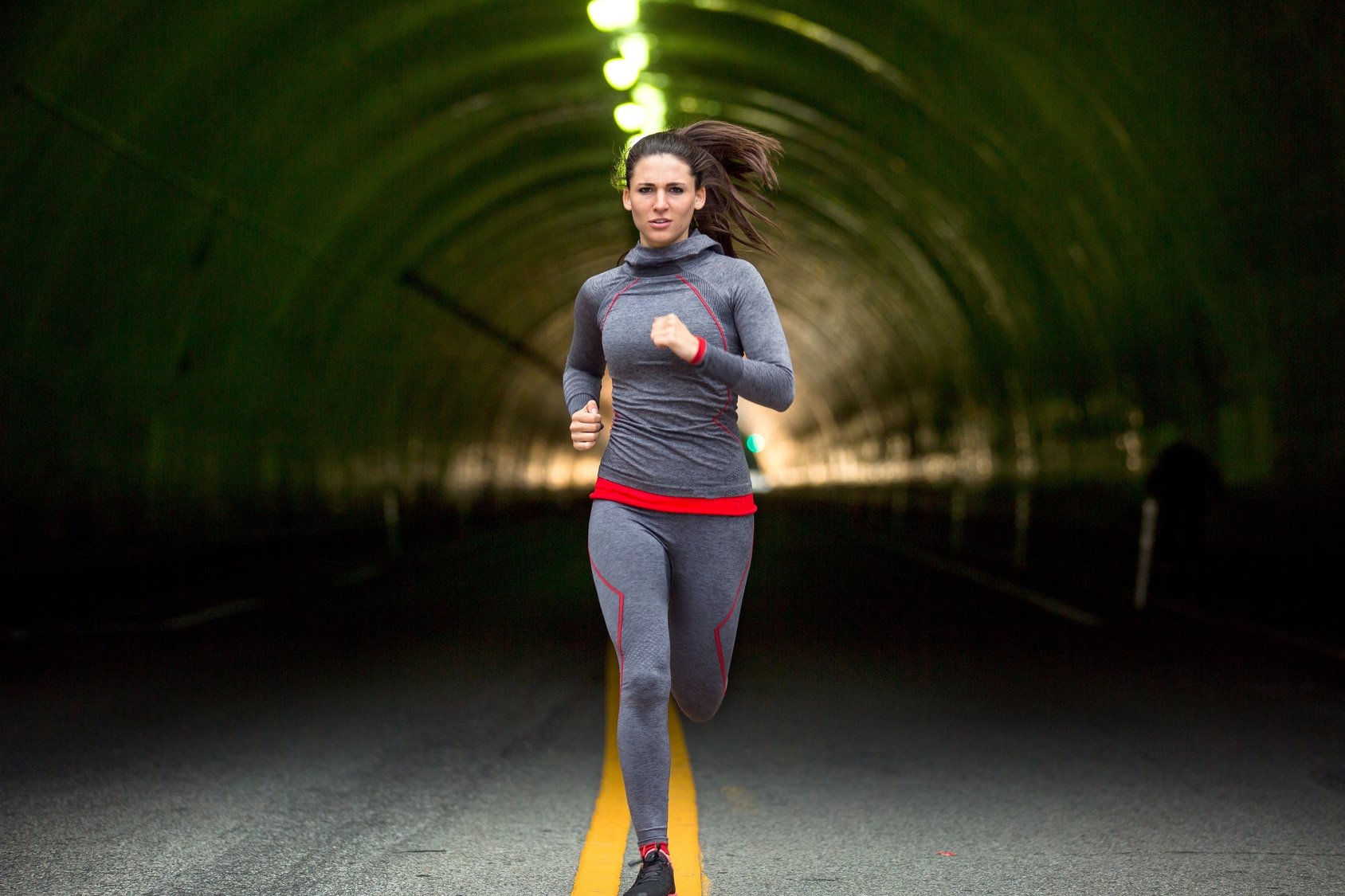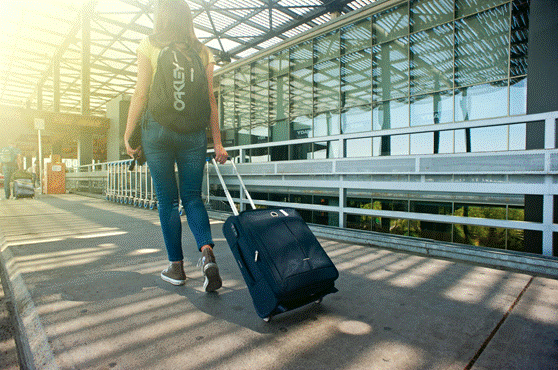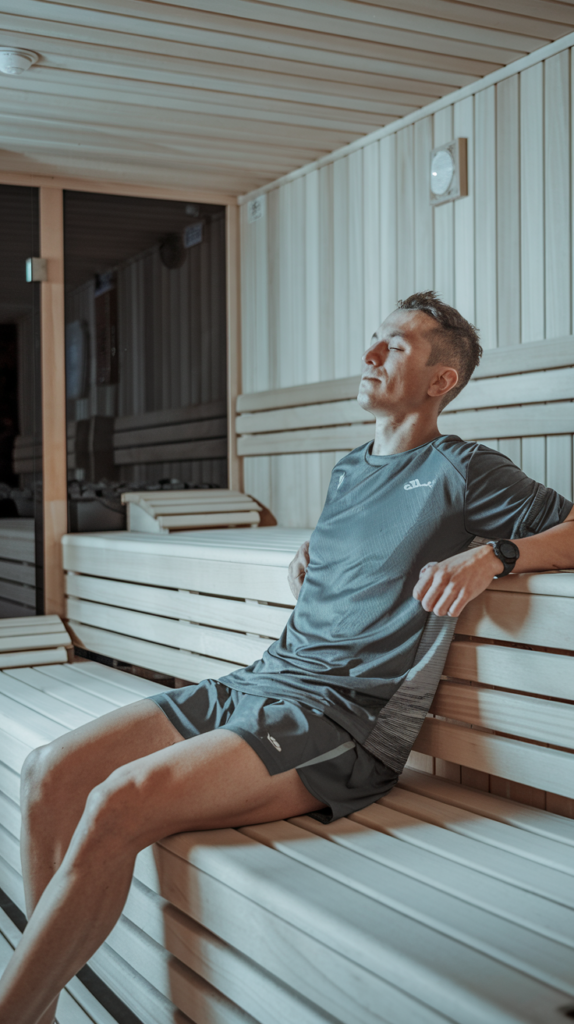Mile 11. I was hobbling, gritting my teeth, and yeah—ripping my shoe off mid-race like a madman. My bunion was on fire, and I’d hit my limit. If you’ve ever tried pushing through a long run with a bunion screaming at you, you know it’s not just “foot pain.” It’s war.
But here’s the deal: you don’t have to let bunions bench you. This guide is for runners who still want to chase miles, even when their feet have other plans. I’m not gonna sugarcoat it—bunions suck. But if you’re smart about it, you can manage the pain, stay strong, and keep logging those miles.
Ignoring bunion pain doesn’t make you a tougher runner—it just makes the injury list longer. Let’s get ahead of this thing, so you can run smarter, not sidelined.
What’s a Bunion Anyway (And Why Should Runners Care)?
So what even is this little devil? A bunion—officially called hallux valgus—is that bony bump at the base of your big toe. It happens when the first metatarsal bone drifts outward and the big toe starts leaning in like it’s trying to make friends with its neighbors.
For runners, this matters. A lot. That joint—your first MTP—is a powerhouse during toe-off. When it’s outta whack? Every step starts to feel like you’re rolling your foot over a sharp pebble.
And bunions aren’t rare either. About 23% of adults under 65 have one. For folks over 65, it jumps to 36%. These things don’t care how fast you are—they just show up and cause problems.
A lot of runners start unconsciously shifting their stride to dodge the pain. Maybe you start landing on the outer edge of your foot, or limping without realizing it. Sounds harmless, right? Nope. That little adjustment can mess up everything—your knees, hips, even your lower back.
I’ve coached runners who ended up sidelined not from the bunion itself, but from the cascade of issues it started.
Like one foot doc put it: “You change your gait to protect that bump, and suddenly your knees are ticked off, your hips are mad, and your back is barking.”
Oh, and don’t forget bunionettes. Yeah, there’s more than one flavor. That’s a similar mess on the outside of your foot, under your pinky toe. Same fix-it tips apply—roomy shoes, toe protectors, and foot-strength work.
Can You Still Run with a Bunion? Heck Yes—But Run Smart
Short answer? Yep. You can absolutely run with a bunion. But it’s gotta be on your terms—not the bunion’s.
For minor bunions that just get cranky every now and then, a few simple tweaks can keep you cruising. I’ve seen plenty of folks who treat their bunion like an annoying teammate—just something to manage. The right shoes, toe spacers, maybe some tape, and they’re back to business.
One runner I coached has had bunions since high school. She still crushes 5Ks—because she ditched narrow shoes, uses arch supports, and doesn’t try to look “cute” on race day. Function over fashion, always.
But if your bunion’s getting worse? If it feels like someone’s stabbing your toe every time you push off? That’s your body waving a big red flag. Ignoring it doesn’t earn you a medal—it earns you time off.
I remember one college runner who kept limping through runs. At first it was just a nag. Then it started messing with their form so bad, they were barely jogging. That bunion went from manageable to run-killing because they didn’t back off soon enough.
If you’re limping, swelling up after every run, or avoiding your usual pace? Don’t power through. That’s not being tough—that’s being reckless.
Run or Rest? Here’s Your Gut-Check Moment
Here’s a quick cheat sheet to help you decide if it’s time to run, rest, or reboot:
🟢 Mild ache or blister now and then?
You’re probably fine to keep running. Just be proactive. Check your shoes (wide toe box is king), toss in a spacer, maybe tape up. Keep tabs on how your foot feels during and after runs.
🟡 Pain mid-run, swelling after, or gait getting funky?
Time to pump the brakes. You don’t have to shut it all down, but cut back on mileage, skip the speed work, and maybe add in some cross-training until things cool off. This isn’t “normal runner stuff”—it’s your body asking for help.
🔴 Altering your stride, limping, or toe joint throbbing after every run?
That’s your body saying “enough.” This is when it’s smart to get checked out by a sports podiatrist. You don’t need perfect feet to run, but you’ve gotta protect the ones you’ve got.
I’ve seen runners bounce back strong just by giving themselves a short break and making smart adjustments. Long-term running wins come from playing the long game—not grinding through pain like a hero.
Surgery? We’ll get into that later. It’s not the boogeyman everyone makes it out to be. But for now, just know this: you’ve got options before going under the knife.
Why Runners Get Bunions (Let’s Be Real About It)
Alright, let’s talk bunions.
Yeah, those nasty bumps on the side of your big toe joint that make your shoes feel like torture devices. Bunions suck. But runners? We get them more than most, and there’s usually more than one reason why. Let’s break it down without sugarcoating it.
1. Born With It? Welcome to the Club
First off, blame your parents (lovingly). If your mom or dad had bunions, odds are you’re set up for the same fun. It’s all about how your foot’s built—flat feet, loose joints, all that biomechanical jazz that makes your forefoot a wobbly mess.
If you’re a runner who overpronates (aka your foot rolls in too much), you’re throwing extra pressure on the inner edge of your foot. That big toe joint—the first MTP joint—takes a pounding. One step at a time, it starts drifting sideways like a busted shopping cart wheel.
The Journal of Strength & Conditioning Research even backs this up: overpronation can gradually deform that joint. And once that starts? The bunion train’s already left the station.
I’ve coached plenty of runners with flat feet who kept wondering why their big toe looked like it was trying to escape. It’s not rocket science—it’s mechanics.
Your move: Know your foot type. If it’s sketchy, take it seriously.
2. Crappy Shoes: The Silent Bunion Builders
Here’s the truth—shoes alone don’t “cause” bunions. But they can take a small issue and throw gasoline on it.
According to Yale Medicine, narrow shoes, pointy toes, and high heels just crank up the pressure. Everyday dress shoes? Offenders. Heels? Don’t even get me started.
But for runners, it’s often racing flats or snug trainers that do the damage. If your big toe is getting shoved inward every step, that bunion bump is taking the hit.
I had a runner come to me wondering why her bunion flared up every time she raced. She was wearing narrow shoes with a tight toe box—classic mistake. You’ve got to let that toe breathe, or else.
And yep, bunions show up more in women. Not a coincidence. Narrow shoes, more flexible joints, fashion torture devices—it all adds up.
Ask yourself: Are your shoes helping or hurting?
3. Running Ain’t the Cause—But It’ll Speed Things Up
Here’s the deal: running doesn’t cause bunions from thin air. But if you’re already predisposed—bad foot mechanics, bad shoes, or just bad luck—then every mile adds fuel to the fire.
Each foot strike hits the forefoot. If your alignment’s even slightly off? Thousands of steps will yank that big toe further out of whack.
One study on foot and ankle issues called out repetitive activities like jogging as a trigger for bunion development when the joint is already vulnerable.
I’ve seen it play out: runners who come in with a small bump and a big training load. They don’t tweak anything—no shoe changes, no support—and a few months later, it’s way worse.
And let’s not forget the classic irritation dance: bunion rubs inside your shoe → inflammation → swelling → more misalignment. It’s a vicious cycle.
Lesson: Running isn’t the villain—it’s just the accelerant.
4. Bonus Culprits: Hormones, Age, and Life on Your Feet
Other stuff piles on, too.
Women deal with looser ligaments thanks to biology (and again, heels). Age makes it worse—more miles on the feet, more wear and tear.
Some folks with conditions like rheumatoid arthritis or generalized ligament laxity? Yeah, they’re playing this game on hard mode.
Even pregnancy can stir the pot. The hormonal changes can loosen up your foot’s structure and—bam—suddenly that mild bunion’s growing up fast.
Oh, and shoutout to all the runners who stand all day for work—nurses, teachers, retail warriors—you’ve got double duty on those feet, which means bunions can worsen faster.
So… Does Running Cause Bunions?
Not on its own. Think of it like this: if your foot mechanics or shoes have already lit the match, running just adds wind.
If you’ve got perfect alignment, wear roomy shoes, and run smart? You could crank out 50 miles a week without ever seeing a bunion. But if you’ve already got one forming—even a baby one—heavy mileage is like hitting the gas.
One sports podiatrist put it best: runners who “pound their feet every day” in bad shoes or without support see bunions snowball way faster than they should.
Real Talk Wrap-Up
Here’s the bottom line, plain and simple:
- Bunions are mostly bad luck (genetics).
- But bad shoes and high-impact running? That’s the fuel.
- You can’t change your DNA. But you sure as hell can fix your footwear and training habits.
Trust me—bunion management isn’t about quitting. It’s about running smarter.
Next up: I’ll walk you through how to keep running strong, even if you’ve got a bunion hitching a ride. We’re talking smart shoes, toe spacers, tape hacks, and tweaks that’ll keep you moving without making the bump worse.
Tape It Up Like You Mean It: Quick Fixes for Bunion Pain
Alright, let’s talk tape—one of the oldest tricks in the runner’s survival kit. When that bunion starts flaring up mid-run, you don’t need some fancy product—you just need to slap some tape on it and go.
Here’s the deal: that bump on your foot? It loves to rub the wrong way inside your shoe. The right tape job? That’s your shield. I’ve seen runners go from limping to cruising just by taping smart.
My go-to? Sports tape or kinesiology tape. Wrap it right over the bunion before your sock goes on. Make sure it sticks to the skin around it—not just the bump—so it stays put. Some old-school road warriors swear by duct tape. Yeah, duct tape. One buddy of mine said, “Band-aids fell off as soon as I started sweating. Duct tape? Stayed on the whole marathon.” No joke.
You can also grab moleskin or those donut-shaped pads from the pharmacy. Cut a hole in the center, slap it around the bunion, and boom—pressure offloaded. Your shoe hits the pad, not your foot. Clean. Simple. Game-changer.
Blister problems? Tape might be your best defense. I’ve had clients who couldn’t fix bunion blisters with double socks or bandages—but a decent tape job? No more hot spots.
And if you’re into the techy side of taping, some folks use KT tape to realign the toe a bit—like putting a mini splint on the big guy. One runner I worked with said her doc showed her how to “buddy tape” the big toe to its neighbor with a spacer in between. It looked weird, but man, she said it eased the pressure on long runs.
Want to see how to do it right? YouTube’s your coach—search “bunion taping for runners.” One runner even tapes her toe in position and leaves it on for days. Says it reduces joint stiffness. I tried it. It’s legit.
Hot tip: After taping, wear socks that don’t mess with the tape job. Thin toe socks like Injinji can help keep friction low—especially between the toes if you’re running taped up.
And for long runs? Add a layer. Some trail runners even stick a piece of foam or gel pad over the bunion for bonus cushion. Try that out on a shorter jog before race day though—no surprises when it counts.
Bottom line: tape is about buying your foot some breathing room. One runner told me, “When I tape, my foot relaxes. The pain isn’t gone, but it’s quiet. And that’s enough to finish strong.”
Your move: What’s your taping trick? Tried duct tape? Foam? What worked—or totally failed—for your feet? Let’s hear it.
Toe Spacers: Not Magic, But They Help
Okay, toe spacers. You’ve seen them, probably tried them—or at least wondered if they actually do anything. Let’s clear it up.
Those little silicone dudes? They aren’t gonna “correct” a bunion. That ship sailed when the toe bone started moving. But they can give you some real relief, especially if your toes are stacking or rubbing.
Here’s the real talk: research shows spacers can ease pain and improve alignment during your run—even if they don’t actually change the angle of the bunion. One study found runners had less pain using toe splints during runs—even though the bone didn’t move. Another study found toe spacer insoles beat out night splints when it came to pain relief. So yeah, they work—just not in a bone-fixing kind of way.
Now, can you run with them? Depends on the spacer. The squishy gel ones that fit between your big toe and second toe are usually low-profile enough to slide into your shoes. There’s a brand called Correct Toes that a running podiatrist designed specifically for this. Smart guy. A lot of runners start wearing them around the house or in casual shoes to ease into it.
I’ve had athletes improvise too—one gal once shoved a wine cork between her toes when she lost her spacer. She laughed, but said it actually helped ease her post-run soreness. Use what works, right?
If running with them feels weird or they keep sliding around, no big deal. Pop them on after your run. I know runners who swear by the “spacer recovery routine”—soon as they get home, shoes off, spacers on. Says it helps undo the tight squeeze from miles of compression.
Also worth a look: Bunion sleeves. They go over the joint and give you a bit of cushioning. Some are slim enough to run in, too. And then you’ve got night splints—big, bulky contraptions that hold your toe out straight while you sleep. They aren’t gonna cure you, but they can help maintain flexibility and stop your toe from curling in more.
A Healthline review summed it up best: these devices help with pain, not correction. But hey, pain relief? I’ll take that every day of the week if it keeps me running.
Toe Spacers: Do They Actually Work?
Let’s talk about toe spacers. Yeah, those weird rubbery things that look like mini torture devices for your feet. But don’t knock ’em till you’ve tried ’em — they’ve got a solid rep in the running world.
I remember chatting in a runners’ group about foot pain — bunions, especially. It blew up. Dozens of runners jumped in to say toe spacers saved their feet. One woman swore by them during a brutal bunion flare-up — said she wore them all over the house, and the relief was real. Another runner? She was all in on Correct Toes — they were designed by a former bunion surgeon who got fed up with quick fixes and made something that actually worked.
Now here’s the thing: you don’t just slap them on and go for a 10K. Your feet need time to adjust. Think of it like breaking in new shoes. Start small — wear them around the house for a few minutes a day, then gradually build up. A runner in her 40s told me she wore Yoga Toes for over two hours a day — for a year. Paired them with wide shoes and solid insoles, and it kept the pain tolerable until she finally went in for surgery.
Bottom line? Toe spacers won’t magically fix a bunion. But if they buy you more pain-free miles, that’s a huge win. A lot of runners mix it up: tape during runs, spacers for recovery. It’s trial and error. Find what keeps your foot happiest and roll with it.
What about you? Ever tried spacers? What worked (or didn’t)? Let’s hear it.
Train Smarter, Not Just Harder
Alright, gear’s only part of the fix. If you’ve got a bunion and still want to run (been there), you’ve gotta tweak your routine a bit. Not talking full-on couch mode — just smart adjustments to keep you in the game.
1. Run on Softer Ground
Hard pavement is brutal when you’ve got foot issues. That shock goes straight through your forefoot — aka bunion zone. Trails, grass, even a treadmill with decent cushioning are way easier on your joints. I’ve had clients swap just two road runs a week for trail work and they noticed a difference within days.
Also, watch out for roads with a tilt (cambered shoulders). Running the same direction on a slanted road every day? That’s a recipe for aggravating one foot more than the other. Switch it up, run both sides, or find a flatter path.
2. Shorten Your Stride
This one’s huge. Overstriding jacks up the pressure on your big toe at push-off. Take quicker, shorter steps instead. Picture an easy, high-cadence jog — it naturally lightens the load on your feet.
And it’s not just runner lore — the Journal of Strength & Conditioning Research and Runner’s World both back this up. Higher cadence = less stress on your toes and joints. Next run, try it. Light, quick steps. Feel the difference.
3. Speed & Hills? Maybe Not Right Now
Speed intervals, sprints, hill repeats — all put your forefoot to work. If you feel your bunion screaming after track workouts, it might be time to scale it back. Switch to tempo runs, fartleks, or hit the bike for your hard days.
And don’t sleep on downhills — they sneak up on you. That braking force on steep descents? Straight to your toes. Stick to flatter or gently rolling routes till your foot chills out.
4. Cross-Train Like a Pro
If running is too painful some days, don’t just grit your teeth and suffer through. Grab a bike, jump in the pool, hit the elliptical. Keep that engine running while your foot recovers.
Rest days matter too. Use them. Ice your bunion, do some foot stretches, and let the swelling die down. I had a runner who took two weeks off, mixed in some PT, and came back basically pain-free. Worth it.
5. Pain = Info, Not a Challenge
This one’s hard for us runners to hear: don’t push through bunion pain. It’s not the good kind. It doesn’t toughen you up — it sidelines you. If your toe starts to bark mid-run, cut it short, tape it up, and reassess. Don’t run yourself into a forced layoff.
As someone wisely said in a forum: if it hurts every time you run, go see a pro. Don’t be stubborn.
You Can Still Crush Goals
You don’t need to give up your training dreams because of a bunion. I’ve seen runners nail marathon prep while dealing with foot pain. The secret? Be flexible. Tweak your runs. Sub in the bike. Ice often. And listen to your dang feet.
Training smart beats training hard — every time.
Foot Fix: Exercises That Actually Help with Bunions (Yes, Really)
Let’s get this straight from the start—foot exercises won’t magically straighten out a bunion like some Instagram miracle hack. That bump on your big toe? It’s bone, not Play-Doh. But here’s the good news: training the small muscles in your feet can still make a world of difference.
Stronger feet mean better alignment. Better alignment means less pain. And when the big toe can pull its weight (literally), everything downstream—your stride, your balance, your push-off—feels smoother. I’ve seen it with runners I coach, and I’ve felt it myself.
Ready to put your feet through their paces? Here’s your foot gym routine:
Toe Curls with a Towel
Old-school, but still golden.
- Lay a towel flat on the floor.
- Sit down barefoot and use your toes to claw it toward you, then push it back out.
- Do 2–3 sets of 10 reps per foot.
What’s happening here? You’re working your foot’s intrinsic muscles—the little guys that don’t get much love but are crucial for toe control. When those get stronger, the bunion joint isn’t doing all the heavy lifting. You might just feel that dull ache dial down a notch.
💬 Mini coaching moment: I used to do these while brushing my teeth—habit stacking, baby.
Toe Spreads (AKA “Toe Yoga”)
Sounds chill, feels tough.
Try to spread your toes apart like you’re making a claw. Focus on moving your big toe away from the rest. Do this standing or sitting—whatever works.
This one targets the abductor hallucis—that’s the muscle that fights against the bunion’s inward pull. You’re retraining it to do its job. Do 10–15 reps, a few times a day. Think: desk break or TV time.
📣 Real talk: First time I tried it, my foot just stared back at me like “you want me to what now?” But after a couple weeks, the difference in toe control was night and day.
Marble Pickups
Turn your foot into a claw machine.
- Drop 10 marbles (or coins or small rocks) on the floor.
- One by one, pick them up with your toes and drop them in a cup.
- Go for 10 per foot.
You’re working toe dexterity and flexor strength here. Translation? More stability and power during toe-off when you run. It also makes you feel weirdly accomplished for mastering a kids’ game.
💡 Try this: Challenge your kid or partner to a marble pickup race. Loser makes the post-run smoothie.
Calf Stretch & Ankle Mobility
Don’t skip this—it’s a bunion secret weapon.
Tight calves mess up your stride. When your ankles can’t flex well, your foot rolls in too much (hello, overpronation), which throws even more pressure onto that bunion joint.
Stretch those calves—straight-knee and bent-knee versions against a wall. Also throw in ankle circles and some shin rolling (foam roller or tennis ball works great).
🏃♂️ Runner insight: Loosening that lower leg chain helps keep your heel down longer, reduces awkward toe-off, and takes a load off the forefoot.
Big Toe Mobility Work
Stiff toe = cranky toe.
Use your hands to gently pull your big toe straight, then move it up and down. This keeps the joint from locking up.
Want more challenge? Loop a resistance band around the big toe, anchor it, and pull outward. This is resisted abduction—teaching the toe to stay in line. Even doing slow toe circles with your hand helps with mobility.
🧠 Pro tip from the Journal of Strength & Conditioning Research: More toe range of motion = better function = less pain.
Foot Doming (aka “Short Foot”)
Sounds weird, feels amazing.
Imagine pulling the ball of your foot toward your heel, but don’t curl your toes. You’re lifting your arch to create a little “dome.”
This one targets the deep foot stabilizers. Strong arch = better pressure distribution = less bunion stress. Try holding it for 5 seconds, then relax. Repeat a bunch.
🧱 Think of this as core training for your feet. Subtle, but mighty.
Make It Stick: The Bunion Game Plan
Do these 3–5 times a week. Treat them like you treat your warm-ups or foam rolling—non-negotiable. One podiatrist told me that building foot strength boosts balance and makes your feet work smarter, not harder. Totally tracks with what I’ve seen in runners, especially those dodging bunion surgery.
There’s even a runner in one of my groups who swears that toe spacers plus these exercises kept her bunion from worsening for years. She dodged the scalpel and still knocks out 10Ks like a champ.
Runner-to-Runner: Why This Matters
You’re not just easing pain here. You’re making your feet stronger, your push-off snappier, your stride smoother. One day you’ll run and realize, “Hey, my foot doesn’t feel like it’s arguing with me anymore.” That’s the win.
💬 What’s your mile pace feeling like lately? Are your feet helping or holding you back?
Drop a comment, tell me what you’re working on, and let’s trade foot battle stories.
Let your foot muscles do some heavy lifting—they’ve got more in them than you think. Keep at it. Progress happens toe by toe.
When to Think About Surgery (And What It Really Feels Like)
Alright, let’s get real. No one wants to talk surgery. It sounds drastic. But sometimes? You’ve tried the shoes, the inserts, the rest days, and that damn bunion still feels like it’s stabbing your foot with every step. If running’s become miserable—or you’re limping just walking to the fridge—it might be time to face the big decision: bunion surgery.
Here’s when I tell runners to seriously consider it:
- That pain in your big toe joint just won’t quit—no matter how many orthotics, spacers, or “good shoes” you throw at it.
- You’ve backed off running. Heck, maybe you’ve stopped altogether. And even walking still sucks.
- The toe is drifting like a slow-motion train wreck—getting worse no matter how careful you’ve been.
- You’ve got complications now: bursitis that won’t go away, arthritis setting in, maybe hammertoes joining the party.
And look, I get it—if you’re in your 20s or 30s, a lot of docs might say, “Wait it out.” Bunions can come back. But guess what? I’ve seen plenty of young runners get the surgery and bounce back better than ever. If your bunion is genetic and getting worse, it won’t just magically vanish. The real trick? Find a surgeon who gets runners—not just walkers—and understands your goal isn’t to stroll pain-free, it’s to crush miles again.
So What Happens in Surgery?
Bunionectomy sounds fancy, but at its core, it’s about putting your foot back in working order. They reposition bones, ligaments, tendons—whatever it takes to straighten that toe. There are a TON of different surgical methods (we’re talking 100+), but don’t stress. Your surgeon will pick what works for your foot.
For runners, they’ll usually aim to keep your joint moving and get you back on your feet fast. One of the go-to moves is something called a distal metatarsal osteotomy (fancy name for cutting and realigning the bone), sometimes with soft tissue tweaks.
And yeah, it sounds intense—but I’ve seen runners literally walk out of surgery in a boot.
I’m not kidding. One runner I coached? She was in a surgical shoe the same day, used pain meds for three days, and slipped into a wide running shoe by week four. No more pain. No comeback bunion. That’s not just hope—that’s modern technique. Stuff like lapiplasty and minimally invasive surgeries are changing the game. Don’t let your aunt’s horror story from 1992 scare you off.
What Recovery Really Looks Like
Let’s talk recovery. Every surgery’s different, but here’s what I’ve seen most runners go through:
- Day 1: You’ll be rocking a post-op boot or stiff surgical shoe. Some people can put a little weight on it right away, depending on the procedure. Others need crutches or a knee scooter for a few weeks.
- 2 Weeks In: Stitches usually come out around day 10–14. You’re still protecting the foot, maybe starting gentle mobility if the doc gives the green light.
- 4–6 Weeks: This is when the magic starts. Bones start knitting together. You might ditch the boot and lace into a wide sneaker. PT usually kicks in now—gotta get that strength and range of motion back.
- 8–12 Weeks: You’re on the comeback trail. Some runners start easing into jogging around this time. According to a sports podiatry source, you might even hop on an anti-gravity treadmill earlier if your doc says it’s cool. By three months, you could be running short stints again—just be smart about it.
- 3–6+ Months: Time to rebuild your miles. The foot’s still getting stronger, but most runners are back to regular runs by this point. A full comeback—where the swelling’s gone and everything feels solid—can take up to a year. But most folks feel great long before that.
Real Runner Comebacks
I’ve seen it firsthand—and so have thousands of others.
One runner told me she was back at it by week nine, no regrets, and wished she’d done it sooner. Another was jogging again by month three, training smart, and gearing up for races by month five.
Sure, not every case is smooth. Some folks rush back and pay for it—scar tissue, stiffness, setbacks. One runner in her 20s told me she pushed too soon, skipped PT, and walked too much too early because of school. Her result? Some stiffness that lingered. She still runs, but she learned the hard way: respect the recovery.
Pick the Right Surgeon (And Ask the Right Questions)
If you’re thinking surgery, don’t just pick any doc from a Google search. You need someone who knows feet and understands athletes.
Ask them:
- Have you worked with runners?
- What procedure do you recommend for someone chasing half-marathons?
Sometimes, they’ll go with a slightly more aggressive fix to make sure it stays fixed. That might mean a few extra weeks on the bench, but hey—better that than a comeback bunion haunting you later.
My Real-World Coaching Tips for Running with Bunions
Look, I’ve coached runners with all kinds of foot quirks—some with bunions so gnarly they looked like they were growing a second big toe. But guess what? They still got their miles in. Bunions don’t have to bench you. You just gotta be smart about it. Here’s what’s worked for me and my runners—the kind of stuff you won’t always hear in a sterile doctor’s office.
Custom Lacing: Skip the Pain
You don’t need fancy inserts or space-age shoes right away. Start with your laces. Ever heard of the “bunion window”? It’s not a house thing—it’s a lacing trick. You skip an eyelet or two right over the bunion to ease off the pressure.
Some runners I’ve coached swear by lacing normally up to the last two holes, then crossing the laces underneath before tying. It lifts the shoe right off the bunion zone. Less pressure = less pain. Period.
I had one runner come back after trying this and say, “Coach, my foot stopped going numb mid-run!” A little tweak, big difference. Don’t overthink it—YouTube “bunion lacing” and you’ll be good in five minutes.
💬 What about you? How’s your lacing game? Ever tried this hack?
Sock Smarts: Your Toes Need Breathing Room
Yeah, socks matter. Toe socks (like the ones from Injinji) are lifesavers. They keep your toes from playing bumper cars inside your shoe—especially if your bunion’s pushing the big toe into its neighbor.
I’ve seen blisters the size of nickels because of this. One runner told me regular socks felt like a “vise grip.” Switched to toe socks, problem solved.
Also, ditch anything with seams right over the bunion. You want smooth, soft, and breathable. Some folks even stick bunion pads on their socks during long runs. Not a bad move.
Play around with sock thickness too. Thin for space, thick for padding—it all depends on how your shoes fit.
💬 What socks are working (or not working) for you right now?
Post-Run Foot TLC: Cool It Down, Stretch It Out
You iced your knees after long runs—why not your bunions? After pounding pavement, hit that bunion with ice for 10 minutes. Follow that with toe stretches or pop in some toe spacers while you sip your recovery shake.
One marathoner I worked with has a solid routine: finish the run, kick off shoes, pop on toe spacers and sandals, elevate the feet, ice while hydrating. Not glamorous, but her feet stay happy.
Keep those calluses trimmed, too. A pumice stone can work wonders. Dry, crusty bunion skin = blister central.
💬 Got a post-run ritual yet? Time to start one. Your feet deserve it.
Rotate Shoes & Change It Up
Different shoes hit your feet in different ways. If you’ve got more than one pair, rotate ’em. It spreads out the pressure and lets your feet breathe.
Same goes for orthotics—try switching between runs with and without them, if your doc gives the okay.
And when you’re not running? Ditch the heels or dress shoes. Go comfy. Supportive sandals, athletic shoes, or even barefoot at home (if it’s safe) are golden.
One runner told me ditching her everyday flats for cushy Hokas made more difference than any toe spacer.
💬 How many pairs are in your rotation? What’s your go-to?
Form Fixes: Run Smarter, Hurt Less
Good form = less pain. I always tell runners: aim for a midfoot strike and boost that cadence. Somewhere around 170–180 steps per minute is the sweet spot.
If you’re heel-slamming or toe-jamming every step, your bunion’s gonna scream. And if you overpronate? Get some stability shoes or orthotics—don’t mess around. Bunions already twist your foot. Overpronation just makes it worse.
Don’t forget: strong glutes and hips help your form. It’s like fixing a roof by reinforcing the foundation. Worth it.
💬 When’s the last time you checked your form or cadence?
Foot Massage = Foot Heaven
Grab a lacrosse ball or golf ball. Roll it under your foot for 2–5 minutes after a run. It loosens tension and gets blood flowing.
I like hitting the forefoot right under the bunion joint—feels like you’re unlocking your foot. You can also gently massage around the bunion. Don’t go Hulk on it—just enough to ease the tightness.
💡 Give this a try tonight. You’ll thank me tomorrow.
Be Smart on Trails
Trails are awesome. But if they’re super rocky or off-camber, they can jack up your toe alignment—especially the big toe. That’s bunion trouble waiting to happen.
Stick to smoother trails if you can. I’ve had runners switch sides on the track every mile to avoid always leaning into the curve on the same foot. Small stuff like that adds up.
💬 Trail runner? What terrain’s been bunion-friendly for you?
Slow Changes = Happy Feet
New shoes? New orthotics? Toe spacers? Ease in. Don’t go hammer out a 10-miler with brand-new gear. Your feet need time to adjust.
Same for bunion exercises. They’ll help long term, but the first week might feel like your foot hit the gym. That’s normal. Just build up.
💬 Trying something new? Start small and listen to your feet.
Pain ≠ Progress. Know When to Adjust
I’m all for pushing hard. But there’s a difference between that satisfying post-run soreness and sharp bunion pain. That pain? It’s your body saying, “Hey, fix this before it gets worse.”
Don’t ignore it. Work with it. Plenty of runners crush marathons with bunions—it’s all about managing them the smart way.
💬 Feeling that “bad pain”? Let’s talk fixes, not heroics.
Don’t Let a Bunion Steal Your Joy (or Your Miles)
Look, running with a bunion sucks. I won’t sugarcoat it. Some days it throbs like it’s got its own heartbeat. Some days you’re limping before you even lace up. And yeah, you might wonder if it’s even worth pushing through.
But here’s the truth: you’re still a runner. That lump on your foot? It doesn’t get to call the shots—you do.
You’ve got tools. Real tools. We’re talking shoes that don’t jam your toes, toe spacers that actually work, taping tricks that reduce pressure, strength moves to keep things aligned, and rest (yes, even rest) when your body demands it.
You’re not stuck. You’re adapting. You’re figuring out how to run smarter.
And you’re not alone. Plenty of runners have been there, limping around after a long run thinking, “That bunion might be the end of me.” But it wasn’t. It was just the beginning of learning how to listen to their body and take back control.
I’ve coached runners who avoided surgery just by changing up their daily habits—switching shoes, dialing in their foot strength, doing a little toe yoga in the evenings. One athlete in her 30s hasn’t felt foot pain in years because she stuck to a routine that worked. Another runner? He went ahead with the surgery—and came back stronger, smarter, and pain-free.
And then there are the quiet warriors: weekend runners, marathoners, trail junkies. They didn’t let a bunion bench them. They found better gear. They kept moving. They stopped trying to be perfect and focused on progress.
Let me tell you: you don’t need a flawless foot to be a strong runner. You just need to care for the one you’ve got. I’ve seen folks with jacked-up feet cross the finish line of 5Ks, marathons, even ultras. And they did it by outsmarting the pain—not ignoring it.
Stay in the Fight—Adjust, Don’t Quit
If something you’re trying isn’t working—maybe your new shoes feel like bricks, or taping just makes it worse—don’t throw in the towel. Pivot. Try something else.
New research is coming out all the time. Sports medicine is way ahead of where it was even five years ago. We’re talking better orthotics, less invasive surgeries, smarter rehab tools.
Get a solid PT or podiatrist on your team if you can. Sometimes just learning how to mobilize your foot or slipping in a custom insert can flip the script entirely.
And please, don’t suffer in silence. Runners are a tribe. There are forums full of bunion-battling runners swapping hacks and war stories. Find your people.
Keep the Joy First
Above all, make sure running stays something you love. That might mean trading roads for trails. Or backing off pace goals while you heal. Or just having a laugh when your bunion acts up again (“Great, it’s throwing a tantrum today”).
Celebrate the good runs. Laugh off the weird ones. The foot freakouts, the sock drama, the surprise blisters—it’s all part of the adventure.
And remember—every runner’s got something. Plantar fasciitis, old IT band flare-ups, knees that creak like haunted doors. Your “something” just happens to be a bunion. It’s not your identity. It’s just one bump in the road (literally).
You’ve got this.
Keep running hard. Run smart. And run because you love it—bunions be damned.
